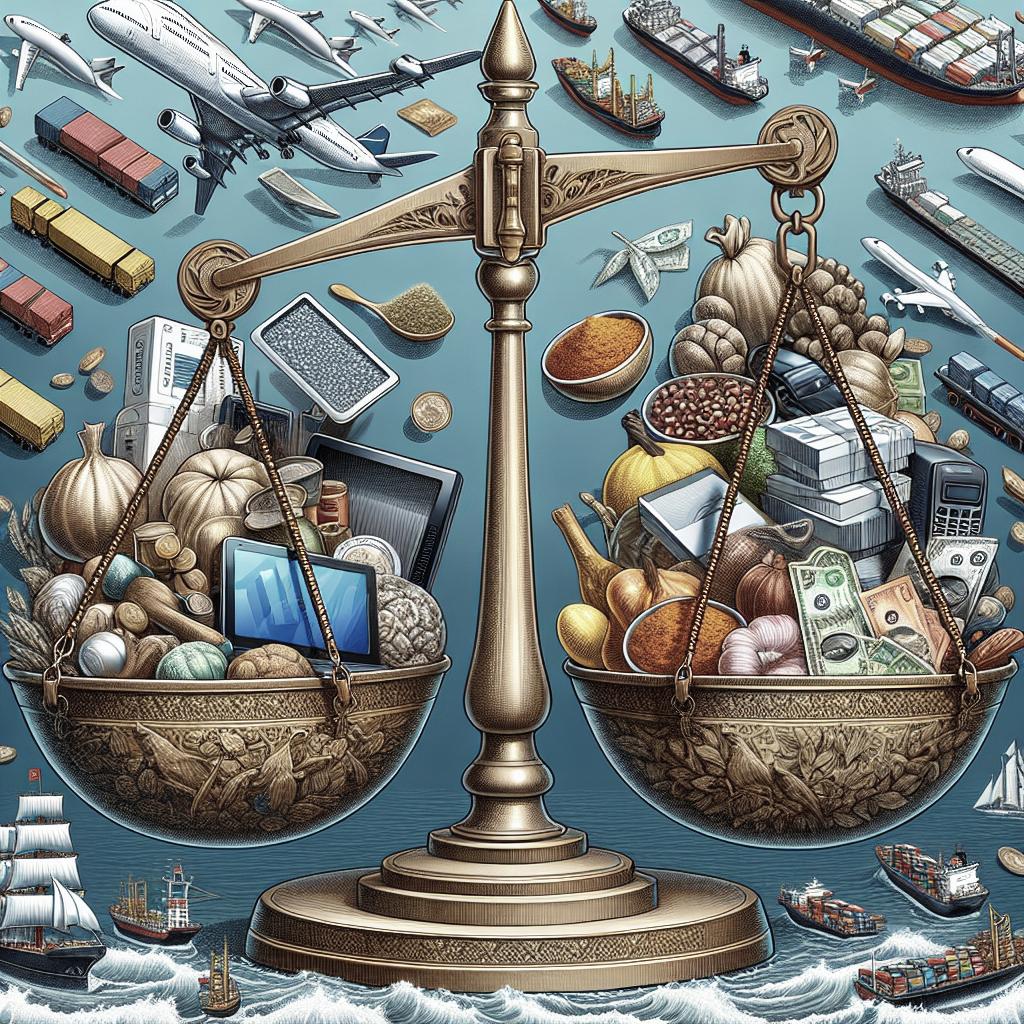Understanding Trade Deficits: A Comprehensive Guide
Trade deficits often emerge as a focal point in economic discussions and political debates. Due to global interconnectedness, understanding what trade deficits entail is crucial for grasping international trade dynamics. This article delves into the definition and calculation of trade deficits, exploring their advantages and disadvantages, and their impact on employment and economies. We also examine the political context, real-world examples, and future prospects for countries grappling with trade deficits. By the end of the article, readers will gain a nuanced understanding of how trade deficits work and what they mean for global economic interactions.
What Is a Trade Deficit?
A trade deficit occurs when a country’s imports exceed its exports over a given period. This means that the nation is buying more goods and services from abroad than it is selling. Trade deficits are reported in the balance of payments, which is a record of all monetary transactions between a country and the rest of the world.
Trade deficits are often viewed negatively, as they can imply that a country is borrowing capital to purchase foreign products. Critics argue that persistent trade deficits can lead to job losses in domestic industries that compete with imported goods and weaken a country’s economic sovereignty.
How Is a Trade Deficit Calculated?
The calculation of a trade deficit is straightforward. It is measured as the difference between the value of a nation’s imports and exports. A negative balance indicates a trade deficit, while a positive balance suggests a trade surplus. Statistics from customs data are regularly used to make these calculations.
For example, if Country A imports $150 billion worth of goods and services, while exporting $100 billion, its trade deficit would be $50 billion. Such figures are crucial for economic analysis and policy formulations, influencing both short-term and long-term economic strategies.
Understanding Trade Deficits
Trade deficits are a natural byproduct of globalization. They can exist because of various factors, such as differing economic growth rates, exchange rates, and consumer preferences. For instance, a rapidly growing economy might import more to meet its expansion needs, resulting in a trade deficit.
Key Takeaways
- A trade deficit reflects a nation’s economic flows with the rest of the world.
- It does not necessarily indicate economic weakness, depending on the context and economic policies in play.
- Understanding the causes and effects of trade deficits is essential for informed economic decisions.
Advantages of Trade Deficits
While often seen as unfavorable, trade deficits can offer benefits. For one, they allow consumers to enjoy a wider selection of goods at competitive prices. Access to diverse foreign products can improve the standard of living and incentivize domestic producers to innovate and enhance the quality of their goods.
Additionally, trade deficits may indicate a healthy inflow of foreign capital. When a country imports more, it could attract investments to finance these purchases, leading to capital accumulation which could potentially boost economic growth and strengthen financial markets.
Disadvantages of Trade Deficits
One major downside is the potential for increased national debt. Persistent trade deficits may require a country to borrow from foreign lenders, leading to a debt spiral that could be unsustainable in the long run. This dependency on foreign capital can undermine economic sovereignty.
Moreover, trade deficits can escalate job losses in industries unable to compete with cheaper or better-quality imports. Such dynamics can lead to economic instability and widen income inequality, posing social and political challenges that require careful management.
How Does a Trade Deficit Impact Employment?
The relationship between trade deficits and employment is complex. While importing goods can sometimes mean fewer domestic jobs in certain sectors, it also opens up the possibility of job creation in other areas like the service and retail sectors, which often benefit from increased trade activity.
Economic theories suggest that in the long term, markets will adjust to trade deficits through mechanisms like currency depreciation, which can make domestic products cheaper and boost exports, ultimately leading to job generation and growth stabilization.
Can Trade Deficits Be Beneficial for an Economy?
In some scenarios, trade deficits can be beneficial. For example, when a country invests the capital it receives from a trade deficit productively, it might stimulate economic growth and generate wealth. This is particularly true if the imports consist of capital goods that enhance future productive capacity.
Moreover, trade deficits might simply reflect a period of economic transition, where heightened consumption and investment in infrastructure and new industries pave the way for future competitive advantages and economic resilience.
Trade Deficit and Politics
Trade deficits are a recurrent theme in political debates, often used by politicians to criticize economic policies or gain leverage in trade negotiations. They can become contentious in international relations, as countries strive to balance their own economic interests with global trade obligations.
Politically, cementing a strategy to address trade deficits might involve implementing tariffs, negotiating trade agreements, or promoting domestic industries. However, such measures often get tangled in broader geopolitical considerations and the complexity of interconnected economies.
Real-World Example of Trade Deficits
The United States consistently records a trade deficit, notably with China. This imbalance has been a source of political tension, leading to tariff implementations and fierce negotiations aimed at creating a more balanced trade relationship. The focus has been on protecting domestic industries while promoting fair trade practices.
Despite the deficit, the U.S. benefits from the affordability and diversity of imported goods, underpinning its consumer-driven economy. The ongoing dialogue surrounding trade deficits influences policy decisions and shapes international trade dynamics significantly.
The Bottom Line
Understanding trade deficits requires analyzing multiple dimensions, from economic implications to political influences. As nations continue to engage in global trade, navigating the intricacies of trade deficits remains crucial for fostering economic resilience and sustaining growth.
| Key Aspects | Advantages | Disadvantages |
|---|---|---|
| Trade Deficit Definition | Reflects economic transactions with the world | None |
| Economic Impact | Attracts foreign capital, encourages competition | Potential debt increase, job losses in some sectors |
| Political Context | Used to negotiate better trade terms | Can strain international relations |
| Real-World Implications | Variety of affordable goods for consumers | Might require complex policy interventions |


